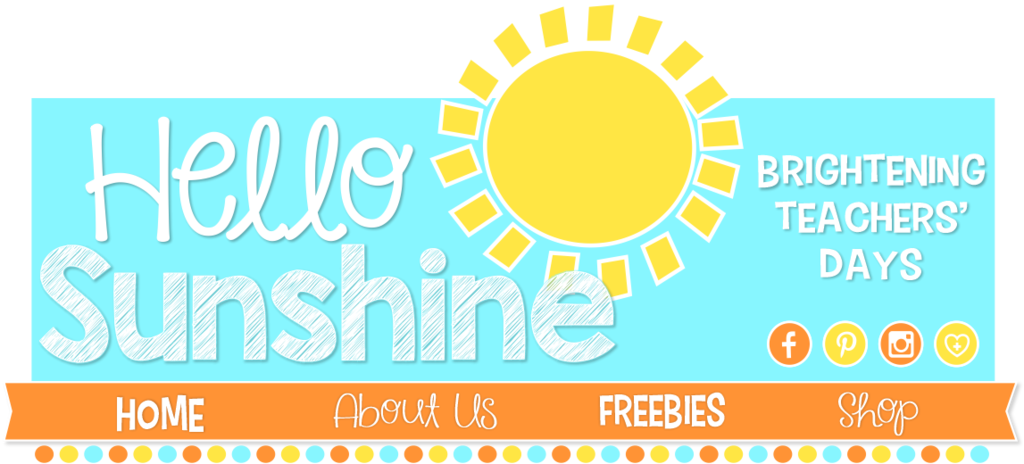We all know the beginning of the school year is full of excitement, adjustment, and exhaustion. Our classes and days can be unpredictable and it takes some time to get students acclimated to classroom routines and procedures. Even if you have a basal curriculum, chances are you don't start teaching from it right away as there are pre-assessments, community building activities, and teaching routines to attend to. If you want to kick off the school year in a fun, meaningful way; and aren't sure where to start; one of the best and
easiest resources to use at the beginning of the year are themed read alouds! I've got some great book recommendations for Kindergarten that can help get your students excited and feel more at ease for the upcoming year!
Utilizing picture books in the classroom is such a vital resource for your students. Reading stories aloud creates student interest in reading, introduces important story elements, and increases reading comprehension. For your early kindergarten learners, it also teaches skills such as sitting and listening appropriately to a story.
Here are some suggestions for great read alouds for the beginning of kindergarten:
Book Titles & Authors from top left to bottom right: Clifford's First School Day by Norman Bridwell, Miss Kindergarten Gets Ready for Kindergarten by Joseph Slate and Ashley Wolff, The Night Before Kindergarten by Natasha Wing, Kindergarten ROCKS! by Katie Davis, The Kissing Hand by Audrey Penn, Kindergarten, Here I Come! by D.J. Steinberg and Mark Chambers, Countdown to Kindergarten by Allison McGhee and Harry Bliss, and David Goes to School by David Shannon
I've used every single one of the books pictured above and my students absolutely loved them! They were so excited when they found something in the book that "was the same as our class". The thing I love about these themed books is that you can literally create any activity you want to to go along with the story. Here are some examples of things I've done in my classroom:
The Kissing Hand
The Kissing Hand is a great book to help ease your kindergarteners' fears about starting school. On the first day, read the story aloud and then have your students create this poem craftivity. Students will trace their hand, cut it out, and draw a heart in the middle. You could also use heart stickers for a simple decoration. Then, glue the hand and poem onto a piece of construction paper and you've got an adorable keepsake from the first day of school. Click on the picture below to download the poem for free!
Miss Bindergarten Gets Ready for Kindergarten
This book tells the story of how a teacher gets ready for kindergarten. After reading the story, I have my students complete this activity sheet for students to draw a picture of how they got ready to come to kindergarten. When I model my version to the class, I make a point to talk about how many colors and details I am adding to my picture. It also provides a line for name writing practice, an essential kindergarten skill.
Clifford's First School Day
This is a simple story response sheet you can use with your students. By completing this activity, kindergarteners will have a chance to practice skills such as: name writing, letter tracing, drawing pictures to match labeling words, learning the name of their school, and story retelling by illustrating.
One thing I've learned from teaching kindergarten for 6 years is that they need LOTS of space to write and draw. Sometimes, when I create an activity, an 8 1/2x11 piece of paper just doesn't cut it. I use a ton of legal size and 11x17 paper, especially during the first half of the year. Thankfully, our school copier is set up to be able to print and copy this size - it's an easy fix to make one of the trays use different sizes of paper in the settings! Try it out! You'll thank yourself for it later when your little kinder babies are writing gigantic letters that just don't fit on a skinny little line.
With that being said, I created the Clifford's First School Day response sheet on 11x17 paper. However, since it is saved as a PDF, you can print it on 8 1/2x11 paper - that is actually the default setting. If you'd like to print it out on 11x17 (which I highly recommend), here are the steps you follow:
1. Click "File" --> "Print"
2. Click "Page Setup" (usually at the bottom of the dialog box)
3. Click "Paper Size" and change it to Tabloid or 11x17 (may be different depending on if you are using a Mac or a PC)
4. Click "OK"
5. Click "Print"
And voila! You have a big workspace for your little learners.
But don't worry, you don't HAVE to print it on 11x17... it's just an option!
Click on the picture below to download the story response sheet for free!
What are some of your favorite read alouds for the beginning of the year? Share in the comments below, regardless of grade level!



















































